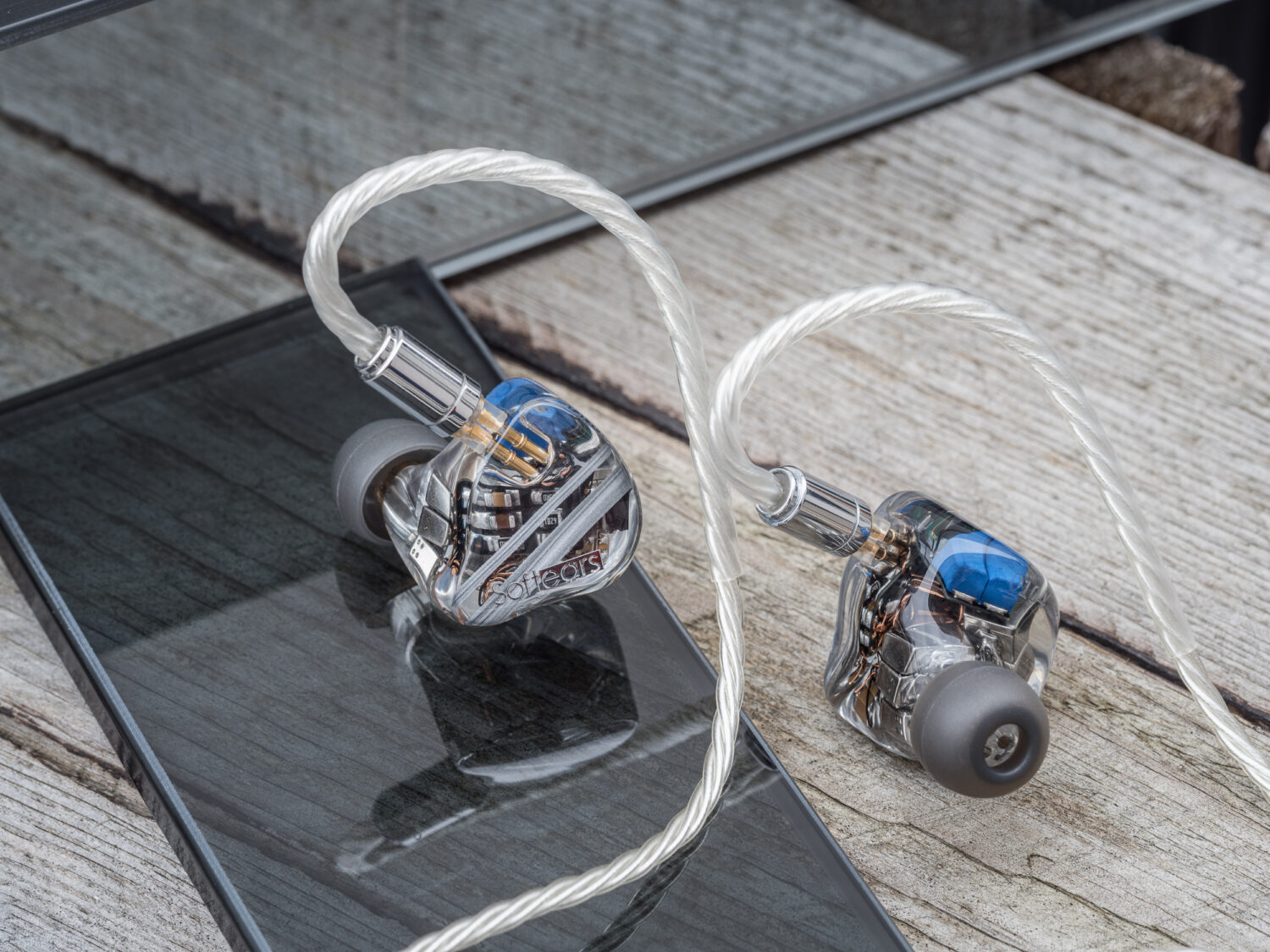
Welcome to this deep analysis review of the Softears RS10. There has been a lot of praise of this IEM in countries where it’s already available. My network has been hyping the RS10 since 2018 and it’s not until now that I actually get to try it myself. And yes, indeed, it was worth the wait! The Softears RS10 is one of the very top-end in-ear monitors. I hope my review will help you decide if this IEM suits you as much as myself.
If you do not know me or are new to my site, I recommend reading my disclaimer. I’ve been a hardcore-IEM addict with a strong interest in technicalities and scientific approaches for many years. My reviews are not known to promote snake oil or write favorably about gear that I request to keep “in exchange for my honest opinion”. On the contrary. My personal preference lies with the neutral and linear reproduction of audio. I’ve been also working professionally behind the scenes for a few years (as a manufacturer, retailer, and distributor) and am now back to portable audio as a hobby. I am here to help you sort the wheat from the chaff.
Check out the Softears Introduction and read the reviews of the RSV and Turii.
Quick Navigation
Introduction
First, you should decide which one of the two images comes to mind when you think of “high-end audio”.
- Escaping a stressful day, falling into a comfortable chair, hitting play, having soothing sounds draw you away and guide you into another world. You close your eyes and your audio gear spans a new universe in which you totally get lost. This experience is priceless for you! It’s all about joy and pleasant sounds.
- For you, Hi-Fi means taking out an analyzer, repeatedly A/B-testing the same 10 seconds with different settings, knowing that better isn’t necessarily truthful, optimizing every single part of the audio chain, micro scoping vinyl to remove dust particles, comparing different releases of the same albums or even producing your own music. Audio is your vocation and expensive gear is an investment.
I don’t want to introduce any bias. Both contrasty scenarios are perfectly fine and can also co-exist. (I think of myself as a great example.) However, if you clearly thought of example 1), you probably do not have to read much further. There is a high chance that the Softears RS10 might not be your cup of tea. Definitely check out the Softears Cerberus instead, but the Reference Sound lineup will probably not suit your needs. However, if you steer towards example 2) then be ready for the RS10 to rock your world!
Softears Company
I have already gathered as much information as possible on the Softears brand. I have also reviewed the Softears RSV and the Softears Turii. Both models have absolutely hit me unprepared with unparalleled finesse. I claimed that RSV is the best-tuned IEM to date. I have also awarded the Turii with a FOTM feature for being the best dynamic driver design yet, IMHO. Do check those articles out if you want to learn more about what Softears is capable of. Definitely continue reading to find out what I would consider even better.
Softears RS10
Sharing the Reference Sound name, the RS10 has a lot in common with the new RSV. This series has meticulous tuning and is aiming for the highest grade of transparency. The Reference Series is suitable for monitoring and has the purpose of delivering uncolored sound to your ears. This means you are not receiving any specific attenuation, smoothed-out errors, diffuse soundstage, or anything. Neither RS10 nor RSV cares about what you like, they focus on what information is on the album. Strictly speaking, this is the very definition of high-fidelity and the reason why I will speak favorably of the RS10 in the following lines.
On the technical side, the RS10 is equipped with 10 BA drivers per earpiece. This huge driver count is part of a complex 5-way system. The RS10 uses 2 band-pass filters, a low-pass, and even a 4th order LC filter to precisely control the impedance and frequency characteristics. As a result, the RS10 has near-perfect phase-impedance consistency across the audible frequencies.
Naturally, the amount of drivers impresses. And while the 18-driver 64 Audio A18t still reigns as one of my all-time favorite CIEM, high drivers and complex designs can potentially collapse to a mess. The 24-driver Ambient Acoustics MAD24 and 9-driver triple hybrid MMR Thummim come to mind as examples where more is less.
Actually, the RS10 has even more than 10 drivers. Softears utilizes passive drivers. Officially, the purpose is to reduce ear fatigue. But based on my hearing experience, the passive driver seems to boost the low-end and give it unmatched authority for BA drivers. I guess this coincides as one was not possible without the other. At least this is where I noticed the most that the presentation of RS10 is different from other IEM.
Efficiency or the Lack Thereof
Do note that if you want to drive the RS10 to its fullest capacities, you will have to equip yourself with a very potent amp. Before being offered a demo loan, Softears made sure to ask me what I will use to drive it. My high-end Chord Hugo 2 was merely worth a “probably sufficient”. And indeed, on some tracks, I moved it all the way up to the blue volume color – other IEM would start smoking at this voltage! Other users are connecting the RS10 to even far bigger beasts (link). Fortunately, the RS10 has linear impedance and won’t change the tonality due to the output impedance of the amp. This makes it very suitable for pro-audio and various interfaces that are usually designed to drive headphones.
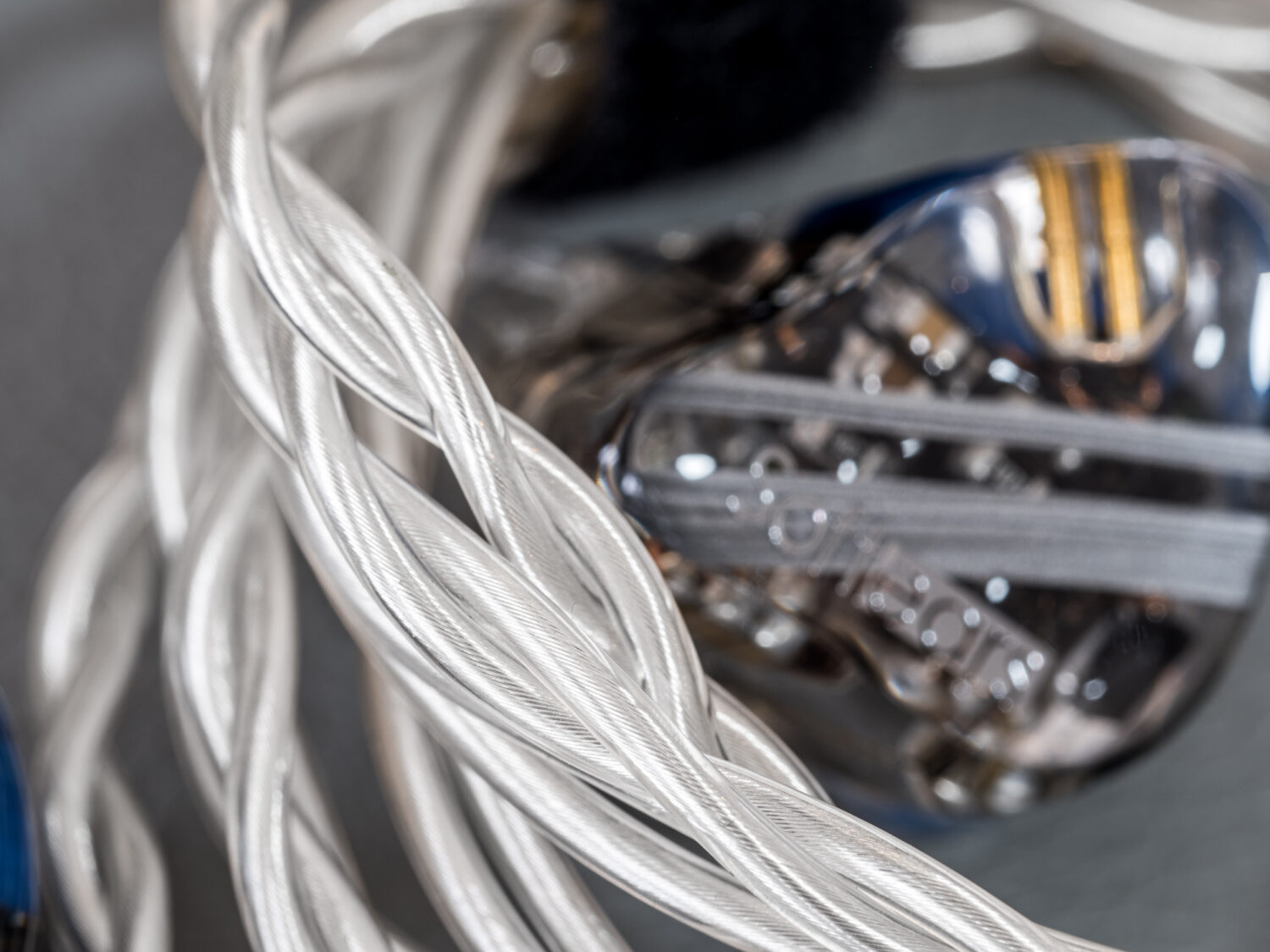
Build (Abbreviated)
At this point, I just noticed that this review is becoming longer than I anticipated so I will save this part for a separate article. Perhaps this section will be more interesting to discuss once I can compare the RS10 universal to a custom-fit version. (Hint, hint.)
Here are very short thoughts: The RS10 is much smaller than I expected. With (custom-) foams I find the comfort to be excellent, though the nozzle is a bit wider than usual. The shell is the most transparent I have ever seen. It’s so much fun to peek inside! The internal wires are short and well-placed. In conclusion, the build quality is excellent!
The cable is decent, though not of the ultra-high-end caliber like the DUNU Blanche, for example. But it does look and feel nice.
Sound Tuning
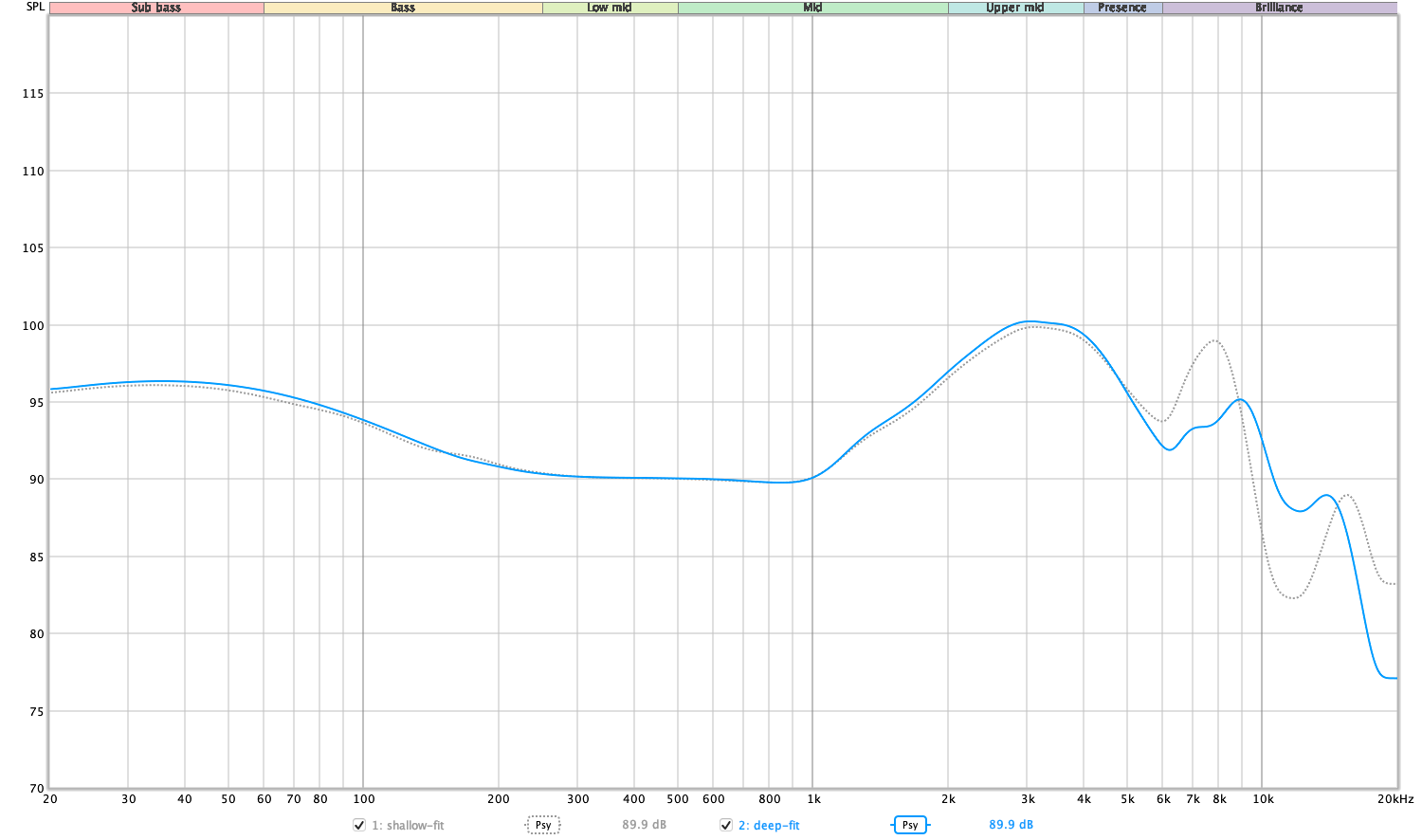
There is little to argue about the tonality of the Softears RS10. It’s exactly what it claims to be. It’s reference-neutral. I tried to decode it more precisely and would put my bets on the EN ISO 11904-2 diffuse-field target with a 1dB/oct downward slope for room compensation – plus a sub-bass boost.
RS10 – A Tuning Reference for All IEM
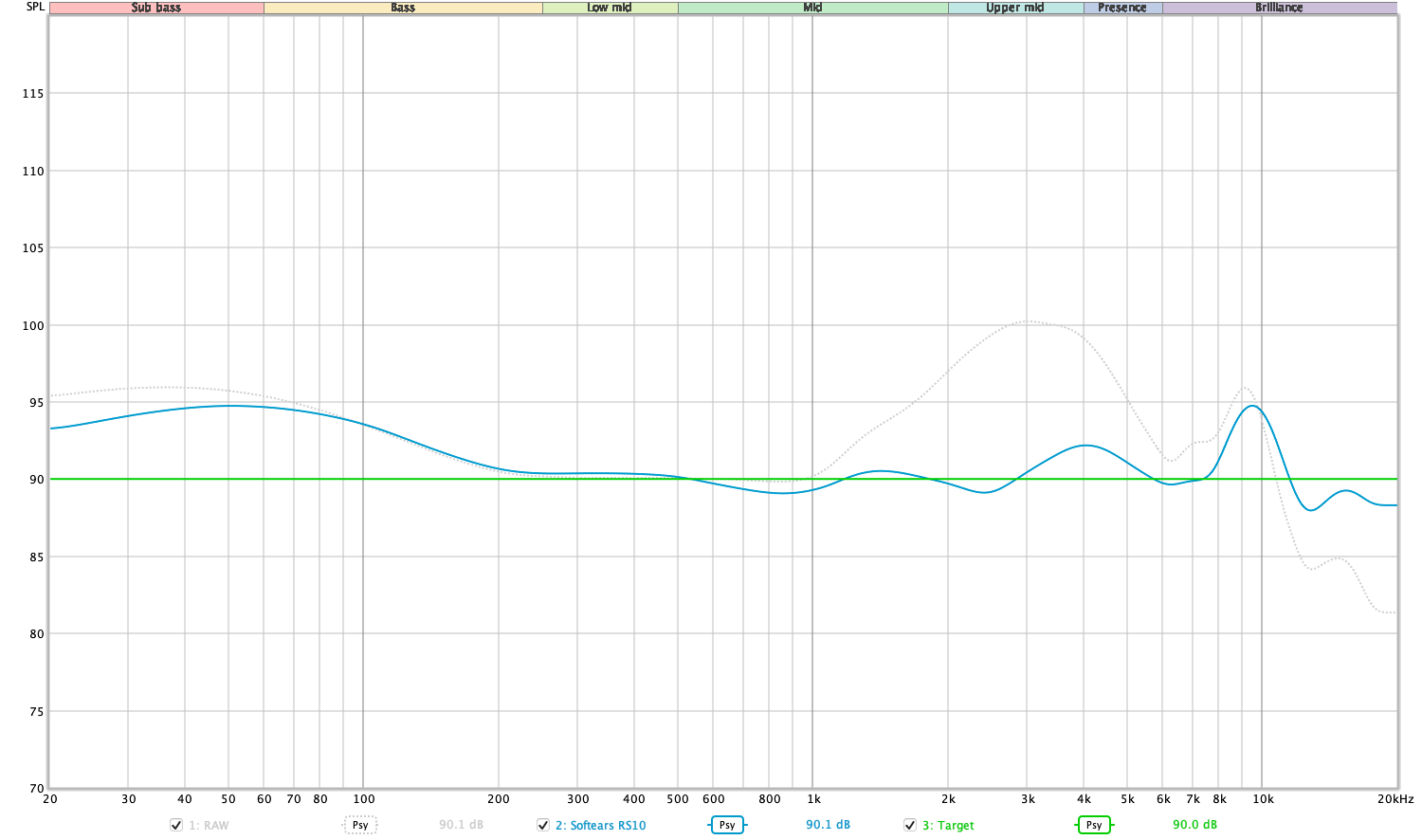
The reason why I am so sure about the curve is that the very smart Niklas, my review colleague from Headflux.de, had me convinced years ago that this is one of the better neutral targets and it’s also what we used internally as a reference. In fact, we used this to equalize all of our headphones. The RS10 overshoots by (less than) 2.5 dB at 4 kHz but otherwise is within variance from ±1 dB from 200 Hz and up (allowing some playground for the resonance). This is absolutely amazing! So if you agree with our reviews published on Headflux (and I know many do), you will also agree with the RS10.
Harman-esque Bass Shelf
Concerning the sub-bass boost, I absolutely urge you to watch the introduction from this video of Amir from ASR explaining frequency response measurements and the Harman curve in general. It explains exactly what Softears was going for with the bass. And in my opinion, they nailed it. The physical impact of some recordings, like the stomping of the choir in Michael Jackson’s Will You Be There (Dangerous) is amazing coming from an IEM. I believe this is also partly due to the passive driver, but mostly because of the low-end emphasis.
Is there still room for improvement?
My latest experiment, searching for my personal HRTF and considering my listening preferences (e.g. volume), resulted in a curve that almost exactly matches the RSV. So the two targets that matter most to me are hit on the nail by a company nobody had on the radar 2 months ago. I might just as well say this is the end-game and call it a day. What improvement am I even expecting from now on?
To be very picky, I wouldn’t mind if the 4kHz were toned down 2 dB. This is quite dependent on the ear tips being used and switching either to foam tips or SpinFit takes a lot of the forwardness away. With the upper mids slightly reduced, I would also pull down the low-end just a notch or make the bass slope more linear. I can’t say if this is due to personal HRTF, subjective preference or simply due to habit. Nonetheless, I have to emphasize that overall I am not aware of any IEM that does it better.
Sound Quality
As always, at this point, I emphasize that SPL curves are not everything. Fortunately, Softears also nailed the execution next to the tuning. In my opinion, even more impressively so.
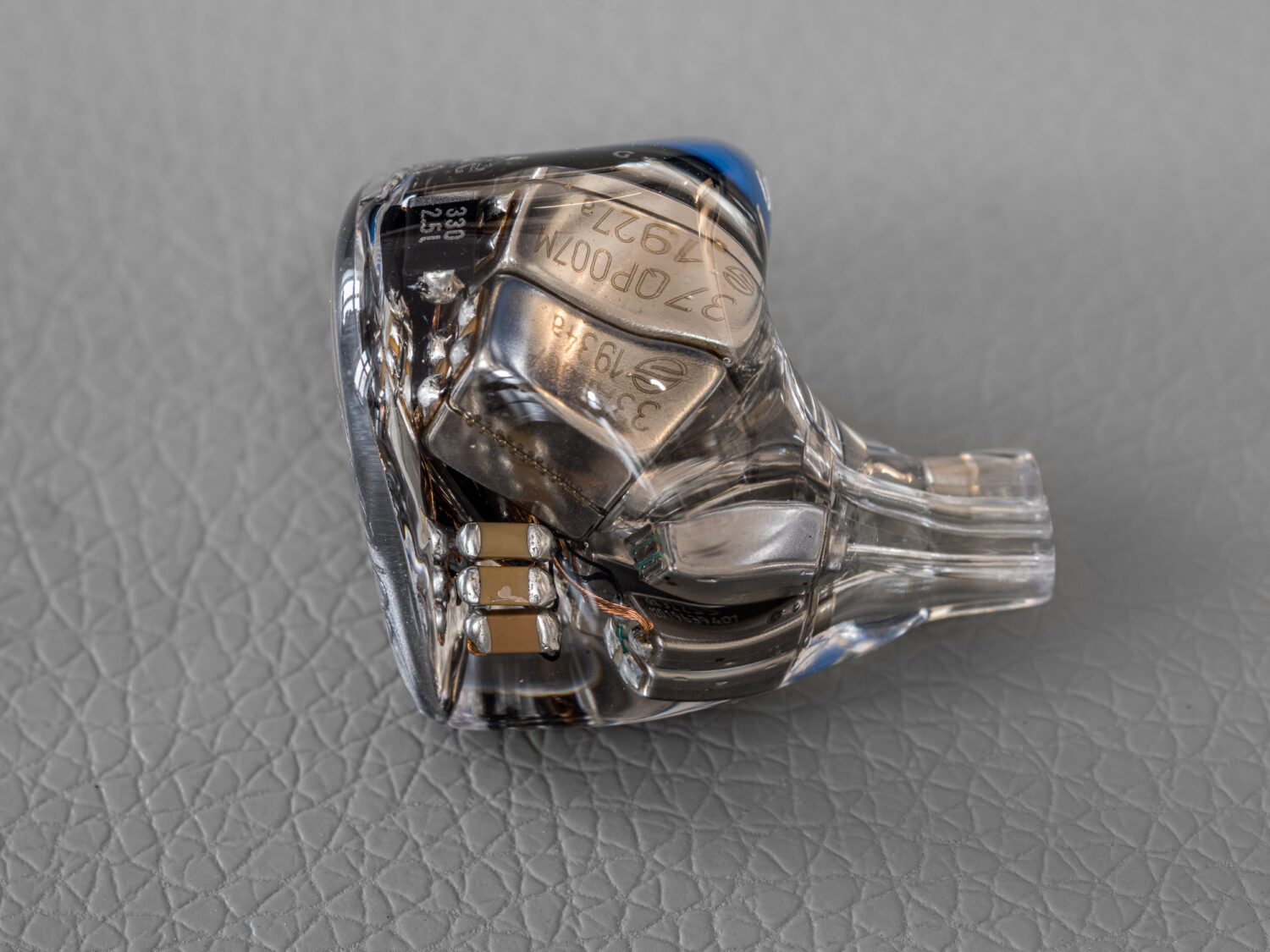
Bass
Apart from the true reference studio tuning, in my opinion, the bass performance is the most attractive feature of the RS10. The Harman-inspired low-end compensation positively stands out in terms of sound quality. The reason for this seems to be the passive driver design. There is an amazing body to the bass notes that you would not expect from a BA receiver. As I understand it, the passive unit is accelerated by the waves from the bass drivers and swings together, naturally enhancing the low-end. This results in an amazing rumble and a low-end experience similar to subwoofers. Careful though, do not expect exaggeratedly big bass! The quantity is still in the realm of neutral.
Likewise, there is plenty of punch. It’s really as if the RS10 allows for the physical impact of DD but still puts the precision of BA first. If this is in fact due to the passive driver, I hope to see this solution being used more more often.
The bass has excellent texture as well. There is not a tiny hint of smear. Every single bass string is cleanly separated from each other. Playing the likes of Danish String Quartet or other Classical recordings is a joy.
Midrange
The midrange is exactly what you’d expect from a diffuse-field neutral monitor. This means the listening experience is very similar to extremely optimized near-field studio monitors in a well-treated room. This is not something many people are accustomed to, but it is necessary for pro-audio to have as little distortion as possible.
No doubts, the listening experience is a little brighter compared to the majority of warmer sounding or v-shaped signatures out there. For sure, some users will complain about “Harman shout” (not an actual term) but the clarity, detail and transparency in the middle frequencies is by far the best I know from any IEM. A lot of the forwardness can be mitigated through use of the included foam tips. It will be interesting to see how the custom-fit version compares, which I expect to be slightly warmer overall (because of better isolation, deeper bass and a shifted resonance peak).
If you like detailed mids, need high resolution for monitoring or are just wondering what would be a logical upgrade from a reference IEM like the ProPhile 8, UERM, ER4, etc., the RS10 should be on top of your list.
Treble
Depending on which IEM you come from, the treble might seem recessed at first and, based on my first impressions, I also found the high frequencies to be lacking sparkle and shimmer. The selection of ear tips definitely plays a role here. Finally, I once again ended up with custom foam tips as shared on Head-Fi here. I expect this way to be closest to the CIEM and ultimately the base design of this model. This way the quantity is closest to my preference and also achieves a very natural extension without any sibilance or harshness.
Technically, the high frequencies are not neglected one bit. I measured the distortion at values lower than 0.04% (THD up to 9th harmonic @90dB) which is insanely low for balanced armatures that are generally not known for a high-frequency extension. I did not come across any audio samples where I thought the treble drew attention in any way. If anything, the attack and decay were faster than I am used to. There is definitely no tinniness or hollowness like with many other BA designs.
I always use two test tracks to test sibilance. My choices are *Adele – Cold Shoulder (19)* and *Metallica – Nothing Else Matters (S&M)*. The sharpness did not come through as expected with the RS10. These tracks can cause quite some ears to bleed with other IEM. The Softears RS10 provides ample headroom.
Soundstage
The Softears RS10 has a rather intimate way of presenting the audio. Voices and instruments are put up close to the listener. This results in rather large size of the individual sound sources. Compared to other IEM, I notice that these shrink the instruments and allow more of a soundstage that reminds me of a time I was playing with lego figures. The RS10 has a much more pronounced in-your head imaging as if persons were standing life-like in front of you.
However, none of that is the RS10’s fault. On the contrary! To describe the presentation more positively, the “Reference Sound” is so precise and transparent that it even lets you locate where the microphones were placed in the recording. While other IEM artificially place you in the 3rd or 4th row of a concert, Softears puts you right there where the microphone is. This can be game-changing when used for monitoring.
Music Pairings and Comparisons
In this comparison, the Softears RS10 is exchanging blows with the top-end from 64 Audio. As an all-BA design, the natural competitors are especially the 12-driver U12t and the 18-driver A18t. The “Tzar” by 64 Audio is far superior as a custom than universal. The U18t can’t quite step up to the more natural and less congested sound of the competitors. The qdc Gemini is standing ready at the sideline, but only has few moments where it shines above the competition.
The InEar ProPhile 8 still stands as my neutral reference, though challenged but not beaten by the RSV. However, now it has to make place for a new king, the RS10.
Sometimes linearity is not the key to enjoyment, so for good measure I am adding the musical Softears Turii and final A8000 to the battleground.
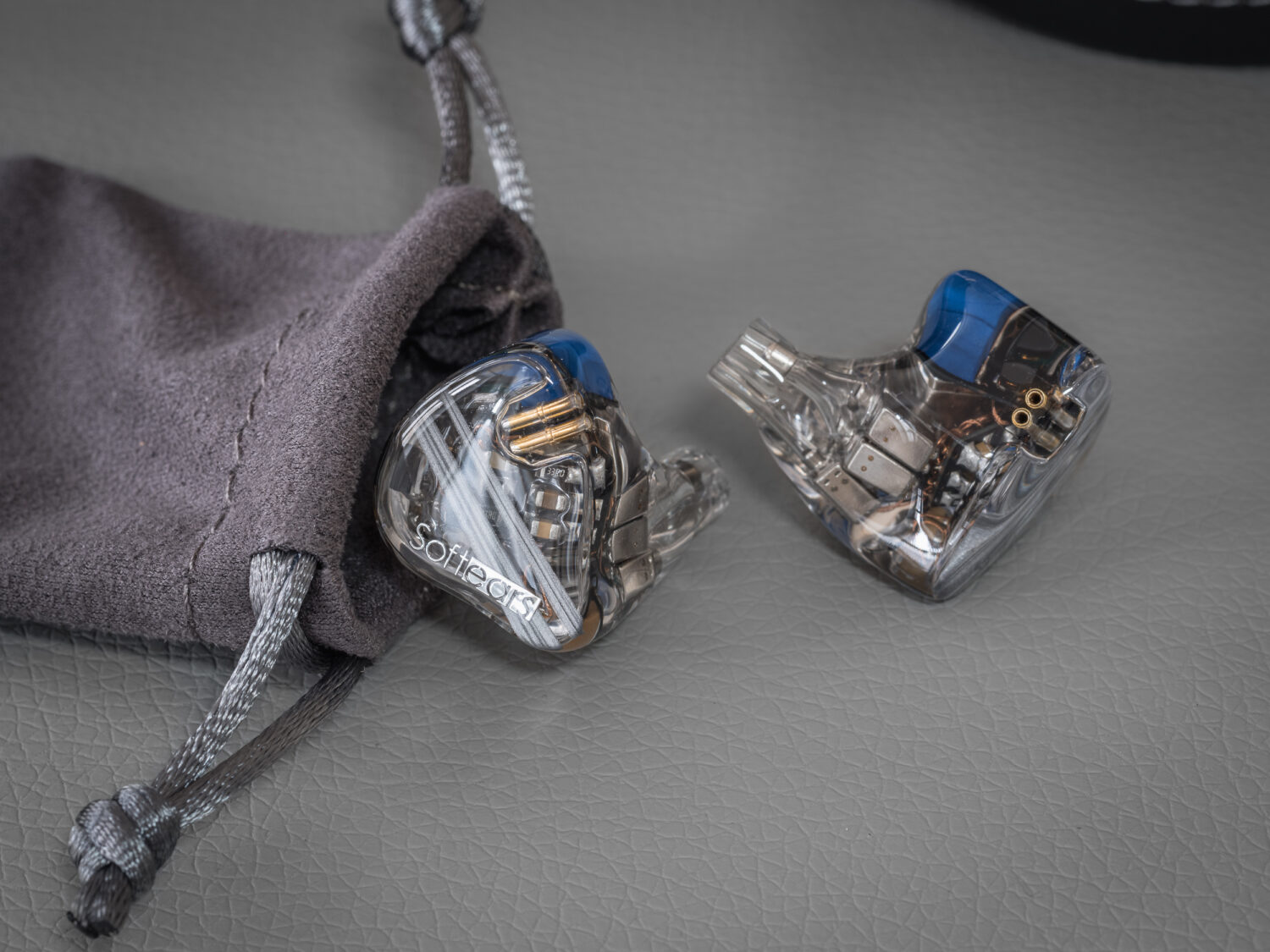
Vocal & Pop
The Softears RS10 scales a lot with the midrange. The performance really depends on the material. In terms of resolution, I am not informed of a single IEM that would match the RS10. Once you start picking up all the tracks where auto-tune subtly comes into play or where a lack of headroom results in clipping, it is hard to appreciate lesser detailed IEM.
Examples
The RS10 works best with dynamic recording. The live album Carnets de Scène by Patricia Kaas comes to mind. At 14 dB crest and 11.7 LU resolution, everything sounds perfect! The RS10 is capable of a true recreation of the live performance. The sheer amount of small whistles in the background, but even more so the magnification of the vocals, is what makes the RS10 sound extremely life-like.
An album where a lot of spatial information is preserved is Michael Jackson’s Thriller. Even on the RS10, especially the main track is a very large sounding rendition. With the RS10 every tiny detail is recreated. Vocals are simply perfect and the bass is deep and punchy. However, this is not necessarily the IEM that makes you jump up and Moonwalk.
Playing Tom Grennan – Lighting Matches shows the strength with male voices. The vocals are joined by Wired Strings and the Wood Green Happy Clappers. The great backup vocals and percussion, which are joined by deep impactful drums, raised my neck hair more than once. No other IEM matched the transparency coming from the RS10.
Since diffuse-field targets are often described as “shouty”, I am throwing in a Pop album with actual shouting. I am playing Bishop Briggs – Church of Scars. Bishop is shouting a lot but the RS10 ironically does not sound shouty at all. Instead, the impactful bass unfolds all its strengths. combination of industrial beats, the powerful vocals, and the background clapping are excellent. The weighty low-end is key here and ties everything together, creating an experience that clearly elevates the RS10 above the PP8.
Comparison
The Softears RS10 is made for Pop music – or vocals of any kind. This is not a guarantee that this will always sound best because technical mistakes on the recording or during production will be clearly audible. But if it’s done right, the RS10 will be the best measurement tool and also scale the widest. Technically, the RS10 confidently passes qdc Gemini, U12t, and A18t. Switching back to any of these IEM, the midrange sounds dampened or veiled and withholding small cues. But do note, the RS10 sounds very technical and mature, maybe even dry at times.
Rock
Especially with Rock music I noticed a lot of artificial distortion that was added in post. During production this is probably meant to simulate the sound of pushing amps past their limit. This graininess is quite apparent with the RS10 but does not always have to be bothersome.
Examples
I am grabbing deep into the music box from my youth and unearthed an old live recording by a Stoner Rock band. Though limited by 2.2 LU resolution, the live performance Go for It… Live! by Fu Manchu sounds excellent! The sound is crunchy but has terrific weight due to RS10’s enhanced low-end.
A good example of where the technical abilities support the audio is Queen’s Spread Your Wings from News of the World. This track is a showcase for huge dynamics. The bite and energy from RS10’s midrange create a pure explosion!
Going by something more recent, like Tool – Fear Inoculum, the RS10 perfectly recreates the atmosphere. It punches hard, has deep rumble, draws attention to the distorted guitars, and allows the cymbals to splash in a wide soundstage. There is, however, a more spacious and dynamic rendition to be heard with other gear.
Comparison
Compared to other IEM, the RS10 can be more edgy and rough. In my opinion, Rock is a genre that can be enjoyed with coloration. A slightly more recessed midrange allows for more headroom and ultimately higher volume. The U12t is possibly a bit more pleasing than the RS10 in this regard but I actually enjoyed the Softears Turii most for this genre.
Metal
Let’s take it up a notch and increase the stress test! Low dynamics and heavy distortion are meant to make Metal music sound raw and aggressive.
Examples
And indeed, Machine Head’s I’m Your God Now is really pushing the guitar’s crunch and edge forward. While the RS10 presents the sound very in-your-face, I also notice how Burn My Eyes has some of the best recordings of drums in Metal.
Searching for even more stress, I pick Mick Gordon’s DOOM Soundtrack. At DOOM’s Gate starts with a sub-bass intro that makes my neck hair stand up! Excellent execution by the RS10 right there! The cymbals are far too compressed on this track but they don’t draw focus here like almost all of the contenders I have added to the pool.
I already mentioned Metallica – Nothing Else Matters (S&M) earlier as I use this to test sibilance. The RS10 has no issues at all in this regard. The live recording is actually also very well done and the RS10 doesn’t sound as in-your-head as I would expect.
Comparison
If you are into Metal because of attack, speed, energy, and raw power, the Softears RS10 might be the best IEM for you out there. However, moshpitters and headbangers that are used to small venues with bad acoustics, might search for a more dynamic and fuller-sounding low-end.
Classical
When listening to Classical music, I appreciate a large soundstage with excellent harmonics and well-textured bass.
Examples
Here is an excellent recording for which 96 kHz actually could potentially make sense: Belcea Quartet, Till Fellner – Brahms: String Quartet & Piano Quintet. Playing through the RS10, the strings are well re-created. However, the presentation is very intimate. It does help that the separation of piano and strings is exemplary and that all instruments have the same presence. I can listen to every track multiple times and focus on a separate instrument every time. The harmonic ensemble comes together nicely.
Next is one of my favorite piano-led Classical pieces: Latin by Gabriela Montero. The jazzy layers are very transparent but especially the piano sounds as if the microphone were very close. I am waiting for someone to pick my hand and guide me through the complex piece, but instead, the presentation is almost stressful. This was probably intended, but I can think of more relaxing ways to listen to this piece.
Newcomer Lucienne Renaudin Vary lets us test the tone of trumpets. On the album Voice of the Trumpet the RS10 recreates amazing background percussions: Most importantly, the trumpet sounds clean and accurate. This is one of the widest soundstages from the RS10 yet, though with greater depth than width.
Comparison
The Softears RS10 does extremely well with separation and natural timbre. Yet I do prefer the more spacious and the slightly better textured A18t for this genre. The tia Fourté and final A8000 also make for a more engaging listening experience that allows the listener to drift off.
Jazz
Just like with art, Jazz is meant to make you think. The message is usually not straightforward but entangled in different layers and complex melodies. The world is not black and white. To bring this message across, it is important that the instruments are well separated and the tone is recreated as intended.
Examples
As expected, the Softears RS10 defends its “Reference” name. It excels with releases by the likes of ECM Records and ACT Music. In this case, I am playing Brothers by Adam Bałdych, Helge Lien Trio, and Tore Brunborg. The melancholy of the violin is exceptional. The album is quite dirty sounding in places as it deals with the passing of a family member. The RS10 captures this despair whereas my other IEM sound too soft and fail to fully present the pain that is captured in this recording.
Anything with high dynamic resolution and only minimally processed recording will sound absolutely breathtaking from the RS10. I can go through 95% of my Jazz albums and claim “this sounds best with the RS10”. I don’t even know where to start. Aaron Parks, Anouar Brahem, Arild Anderson, Arve Henriksen, Avishai Cohen, Barre Phillips, Bobo Stenson Trio, … Too many to list, I can’t even make it to the letter C.
Older Jazz recordings can tend to sound a bit rough. The noise is very apparent on the RS10. A welcome change is the excellent soundtrack to Ma Rainey’s Black Bottom. This album has the same incredible spacious atmosphere from older Jazz recordings but also the technical advantage of modern gear. No surprise here, it’s pure joy to listen to with the RS10.
Comparison
Overall, the Softears RS10 is the king of high-resolution Jazz and has thus won the key to my heart. The realism with only minimally processed audio is unmatched! The RS10 outperforms any IEM I know in this regard. However, Jazz is not a modern genre. I enjoy old recordings as much as new ones and in that case it can be more enjoyable to have a more forgiving IEM.
Electronic
I’m not an expert in Electronic music or EDM. What I look out for is a deep and punchy bass without anything distracting from the melody.
Examples
I hit play on Ela Minus – Acts of Rebellion. Oh my, I am introduced to headache-inducing heavy sub-bass. In my mind, the quantity hits basshead levels. I seriously have to take a break after a few minutes. I guess this is a great example of the headroom that is available with the RS10. The shelved tuning of the RS10 allows to keep this potential hidden unless asked for.
To try something less Dance-oriented, I pick The Glitch Mob and play Disintegrate Slowly and Come Closer from the album See Without Eyes. The RS10 plays the cleanest and fastest of how I have yet experienced these tracks. But the sound remains forward-sounding and aggressive. My guess is, based on the track names, that this was intentional.
Comparison
Without a reference to actual instruments, I am not too sure how the music is actually supposed to sound. The RS10 definitely has a very tight and deep rumble with great slam when the audio track focuses on it. To beat the impact, one probably has to switch to dynamic drivers. I know a techno DJ who is very fond of the Campfire Solaris. But at what point are we moving away from audiophile audio to make the head rumble? I don’t want to be the one to judge.

Pre-Verdict after Comparison
Over the course of 4 weeks, the Softears RS10 has completely won me over. It is truly the new king of neutral IEM! Although I just recently claimed that the RSV is the best-tuned IEM yet, the RS10 now shakes my assertion. The RSV is basically a loudness-corrected version of neutrality, but the RS10 sounds even more mature, drier, detailed, …. or in one word: transparent. Previously, the PP8 and A18t were fighting over the top spot for my reference IEM, but neither matches the fineness and technicality of the RS10.
With the RS10 I can jump back and forth from near-field studio monitors. It is truly amazing! There is so much agreement between these two very different ways of experiencing audio. (FYI, my job is selling studio monitors.) Yet I don’t expect the RS10 to necessarily dethrone the community’s favorite U12t, but if you are serious about linearity or accurate monitoring, the RS10 is hands-down the better IEM. Once adjusted to the RS10, the U12t sounds too boomy in the bass, and dull and veiled in the mids. This does create an easier listening experience, but if my salary depended on it (e.g. mixing and mastering), I would definitely go for the RS10 instead!
There are far too few manufacturers or brands going for high-fidelity. The high-end market is crowded with extremely colored, bassy, warm, treble-focussed IEM. Most of them have a really diffuse soundstage too. I think it’s absolutely necessary to have one reference like the RS10 for comparison. (Or equalize your 64 Audio A18t.) But be warned, once you learn and understand that the RS10 does things better, your acceptance for other IEM might drop like a heavy stone. On the plus side, the Softears RS10 could very much heal many users from upgradetitis.
Verdict
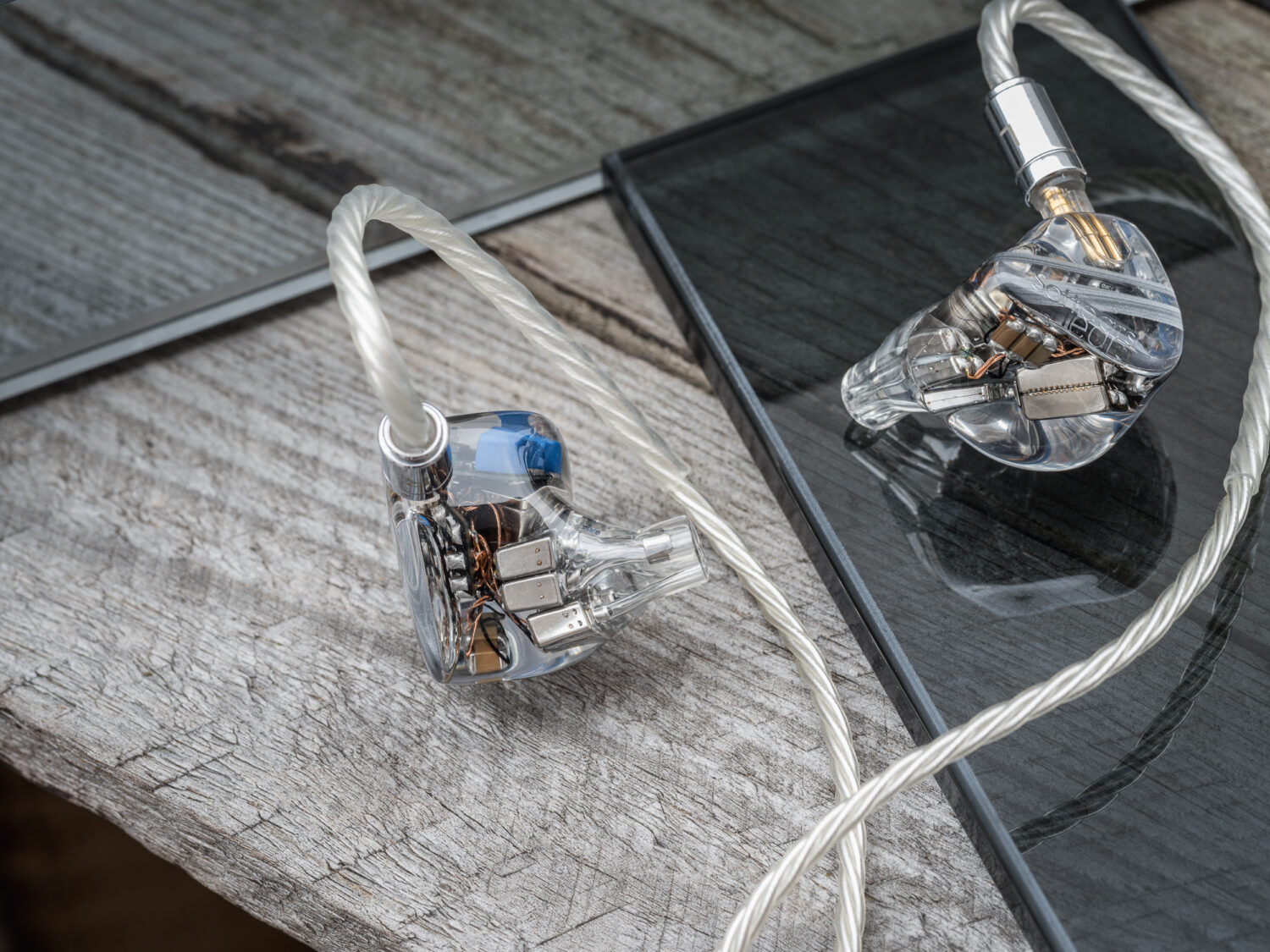
The Softears RS10 deserves every association with the term reference used in in-ear monitoring. The tuning is near-perfect and the synergy among the many drivers is breathtaking. Build quality is also among the best and the universal body is so comfortable that I don’t even crave a custom-fit version.
Be warned, though. The RS10 is the most transparent IEM I have ever experienced. This includes revealing distortion, clipping, background noise, misplacements of microphones, and an insane amount of auto-tune. The main question is if you can appreciate music for what it is. Can you enjoy an album with all its mistakes? I know that I can, but I have also met a few audio enthusiasts that do not. However, going back to the introduction, if you are among the smaller group 2), e.g. if you are in pro-audio and actually want an IEM for monitoring, the RS10 should be at the very top of your list! I wouldn’t know which IEM I would recommend over it.
If I maintained a ranking list – of which, by the way, so far the A18t and U12t were sitting comfortably at the top, followed by the ProPhile 8 and RSV down the line – the Softears RS10 would now take the very highest spot! The ambitious team from Chengdu has such a low margin for error that it’s scary. We will have to wait and see if this is a turning point in the high-end IEM market, but I definitely see the potential for changing the reputation of Chinese manufacturers. If you will continue to follow my blog, be sure to see the RS10 listed as a reference and the IEM to beat for a while.
